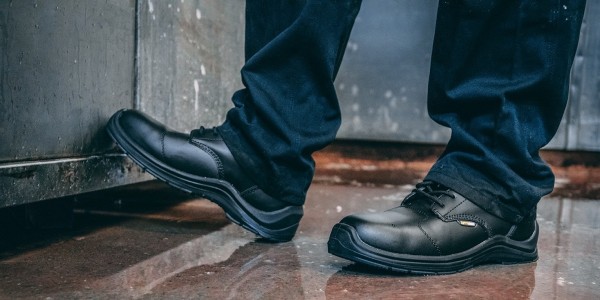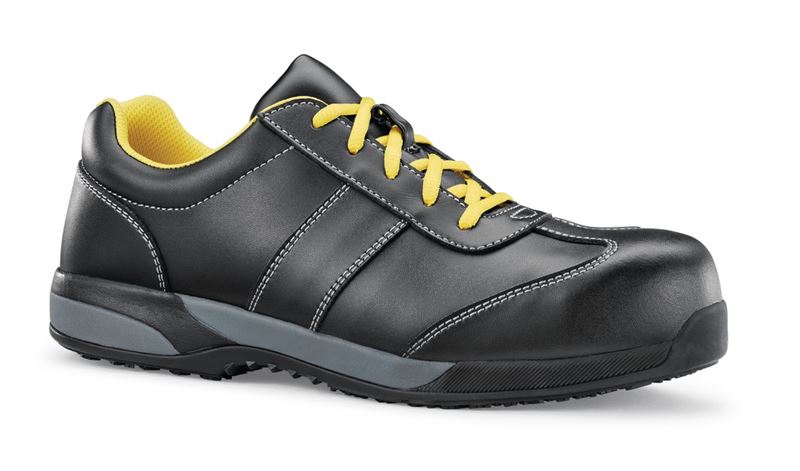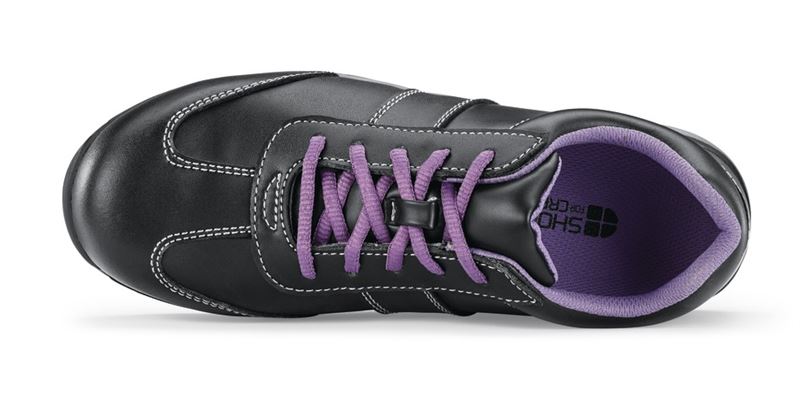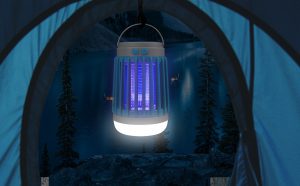
The Best Safety Shoes, Work Boots For Men and women
Looking for the best safety shoes, work boots for men and women? Don’t know what you should buy? How to choose the right safety footwear? There are so many factors to consider when buying safety shoes, work boots and other workplace footwear. It would be hard to find a safe shoe that does everything you need it to do. So here are some of the top recommendations: These safety shoes, work boots and other footwear brands have been tested and proven over time to be reliable, comfortable and effective. They offer great protection from drops, mudslides, snowfalls and other elements that can easily affect your feet. They also provide support from all angles. If you’re looking for a good old-fashioned option that will keep your feet feeling fresh all day long, check out these top recommendations!
What is a good safety shoe?
There are many types of safety shoes out there, each with their own pros and cons. The best safety shoe for you will depend on your needs and the type of work you do. There are many shoes that are made for work, but often end up being a bad choice for athletes or those who have a hard time keeping their feet flat. Whether you’re an athlete or not, there are plenty of great options out there. The best safety shoe for you will likely be a combination of the following: The right Forefoot-iped to reduce stress on your feet. The best safety shoe for you will likely be a combination of the following:
Best work boots for men
If you’re shopping for work boots, you’re looking for a shoe that provides the right combination of support and comfort. There are many styles and models of work boot out there. It can be hard to know where to start. There are plenty of options, but here are some of the most popular brands: Buck Dockers Eagle Essential Excel Lumberjack ña
Best safety shoes for women
If you’re buying work shoes for women, you’re not just looking for the same thing as a man. There are plenty of styles and models of women’s work boot out there, too. Some of the best work shoes for women are: Dockers Lumberjacks Excel Excella Stride
Should I Get a Safety Shoes, Work Boots For Men or Women?
If you’re looking for a safety shoe, work boot that will do the job, and look the part, regardless of whether you’re a man or a women, it’s best to go with a brand that is known for producing high-quality products. There are many brands out there that are competent at manufacturing safety shoes, but may lack in the design department. However, there are plenty of great options out there without being known for making quality shoes. It’s important to carefully examine the following factors before making a purchase: Style You don’t have to be the greatest shoe designer to know that two similar looking shoes can easily end up being two very different types of shoes. Style is one of the most important factors to take into consideration. You don’t have to be the handsiest person on the planet either way. If you have the ability to assess a shoe’s design, you’re likely in better shape than the person who does only one thing well: walking around with a shoe that isn’t properly balanced, badly cushioned or that is holding up to little wear and tear well. Construction Construction is another important factor to keep in mind. The more time and money manufacturers spend on making a shoe, the more reliable they’ll be in the long run.
Lightweight Safety Shoes
When it comes to safety shoes, lightweight shoes are always a good option. They allow you to move with ease while providing the right amount of traction. The best safety shoe for you will likely be a combination of the following: The right Forefoot-iped to reduce stress on your feet.
- The right Toe-box is ideal for those who have wider feet.
- The right Pronation-control for efficient and healthy feet.
- The right cushioning for added comfort and longevity.
- The right arch support for healthy feet.
- The right heel support for a stable and healthy foot.
The bottom line
There are many safety shoes that are made with supportive but also heavy soles. These shoes are excellent for working in, but they don’t provide the same level of protection that a light and comfortable shoe does. If you’re looking for a shoe that will keep your feet as healthy as possible, look for a softer, less protective model. If you’re more concerned about longevity and comfort, opt for a heavier and more durable shoe.
Hiking Boots
If you spend a lot of time hiking or trekking, or you’re just looking for a good pair of hiking boots, you’re in luck. There are plenty of great options out there. If you’re shopping for hiking boots, you’re looking for a shoe that provides the right

combination of support and comfort. There are many styles and models of hiking boot out there. It can be hard to know where to start. There are plenty of options, but here are some of the most popular brands: Dockers Lumberjacks Excel Excella Stride Remember, there are many different types of safety shoes and work boots available. It’s important to carefully examine the following factors before making a purchase: Style Construction Sole Weight Heel Support Arch Support You should also be aware of any potential safety defects in your selected safety shoe. Be sure to discuss your shoe options with your healthcare professional before making a purchase.
What Does EN ISO 20345 Mean?
It’s a standard that applies across Europe. Set by the International Organization for Standardization (ISO), it outlines the minimum and optional requirements for safety footwear. This includes slip resistance and features to protect against thermal and mechanical hazards.
Currently, there are two supplementary standards within it: EN ISO 20345:2011 and EN ISO 20345:2012. They cover different levels of protection classes, which we’ll explain below.
The Basic Safety Codes and What They Mean
The two EN ISO standards cover different protection classes. You may have seen terms like “S2 Certified” or “OB Certified”. This merely refers to the extent of a hazard to which the shoe protects against.
So, let’s decode.
EN ISO 20345:2011
SB (Safety Basic)
As the name suggests, this is the basic safety standard for footwear. SB rated shoes offer non-slip soles and steel toe caps to protect against 200-joule impact. They may offer additional safety features which will be indicated via other symbols.
 |
 |
The Clyde safety shoe for men and the Bonnie for ladies by Shoes For Crews Europe.
S1 – As well as basic toe protection and slip-resistant soles, S1 means the shoe also has antistatic protection, is oil resistant and offers energy absorption in the heel. Other safety features may be added.
S2 – All of the features as S1, plus waterproof exterior so prevents water penetration and offers absorption in the upper shoe.
S3 – All of the features as S2, plus midsole penetration resistance – meaning that these shoes are puncture proof. For example, a steel midsole prevents sharp objects from piercing through the sole.
S4 – All of the features as S1, but is made from a rubber upper or entirely moulded polymer, such as a Wellington boot. This means they’re waterproof and leak-proof.
S5 – All of the features as S4, plus midsole penetration resistance to prevent sharp objects from piercing through the sole.
EN ISO 20345:2012
OB – This certified shoe offers non-slip soles (at one of the three levels which we’ll discuss here). It’s possible to have an open heel.
O1 – Like OB, this shoe is slip-resistant. It’s also closed heel and offers antistatic protection and energy absorption in the heel area to promote lighter walking.
O2 – All of the features of O1, plus water-resistant upper to offer a minimum of 60 minutes protection against water.
O4 – All of the features of O2, plus a profiled sole to offer additional comfort. They are also rubber or plastic shoes.

The Slip-Resistant Sole Codes and What They Mean
Slip-resistant shoes are essential for many workplaces. They have deeper tread grooves than standard shoes and so, can grip the floor more securely and prevent slips, trips and falls. Slip resistance is classified via the following codes which indicate where the shoes have been tested on and thus, their level of slip resistance…
SRA – Tested on ceramic tile floor wetted with a diluted soap solution.
SRB – Tested on steel floor with glycerol.
SRC – Tested under both SRA and SRB conditions.
Additional Safety Feature Codes
SB is the basic safety level required, but for footwear that promotes additional safety, look out for these codes…

Antistatic protection (A) – Protects against static electrical charges, such as minor static shocks, but does not offer full protection from exposure to electronics or explosive work. Electrostatic Protection is needed for that.
Midsole penetration protection (P) – Protects feet against sharp objects that may pierce through the sole. Footwear that meets this standard resists a penetration force of 1100N. SB-P, S1-P, S3 and S5 ratings cover this.
Energy absorption (E) – Absorbs energy and pressure in the heel region to relieve pain.
Water resistant upper (WRU) – Upper is resistant to water. Does not apply to rubber or polymeric footwear.
Heat resistant (HRO) – Heat-resistant outsole which resists 300℃ for up to 60 seconds.
Insulation against cold (CI) – Provides insulation against cold for 30 minutes at -20℃.
Insulation against heat (HI) – Insulation against heat for 30 minutes at 150℃.
Electrostatic discharge (ESD) – ESD footwear has been designed for the electronics and explosives industry. It must meet ESD CEI EN 61340-5-1 standards.



